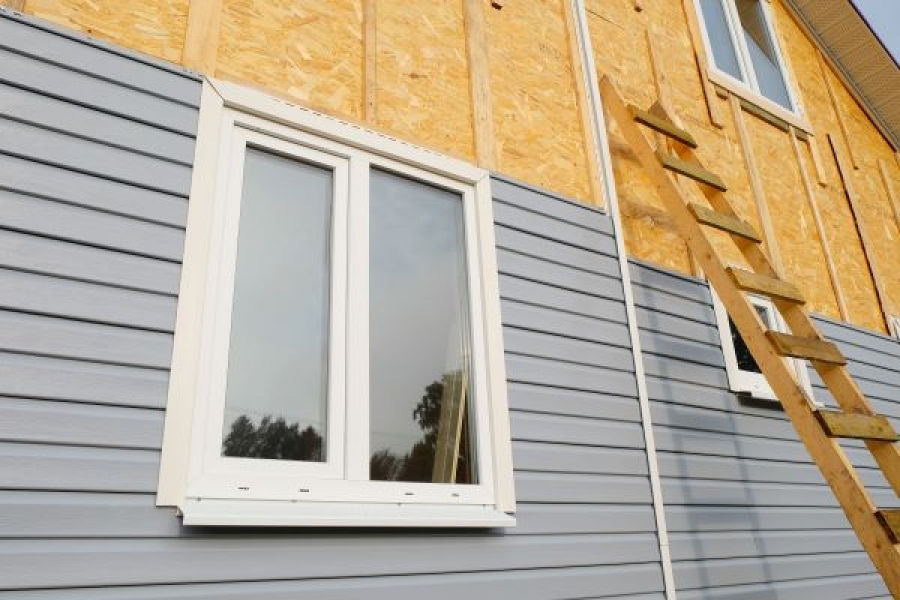First impressions matter, especially when it comes to your home. A well-kept exterior can greatly improve how others see your property. But what if you could take it a step further?
Enter recladding. It's more than just a surface-level change. This process involves replacing the outer layer of your home with new material. In this article, we'll delve into how recladding can significantly enhance the aesthetic appeal of your home.
The Basics Of Recladding
Recladding involves replacing the existing exterior layer of a building with new material. This upgrade isn't just for looks; it can also enhance durability and insulation.
When it comes to materials, there are various options to consider. Wood offers a timeless, natural appeal. Metal, particularly aluminum or steel, provides a sleek, modern look and requires minimal upkeep. Stone, on the other hand, offers both elegance and robustness, although it can be more costly.
The recladding process usually starts with a detailed assessment of the current exterior. This is crucial for identifying structural issues that need addressing before the new material is added. Then, the old cladding is removed and the new material is installed. This may also be the right time to add insulation, repair damage, or make other structural improvements.
It's essential to work with experienced contractors, such as home builders in Auckland, to ensure the project meets local building codes and standards in your region.
How Recladding Elevates Curb Appeal
Updating your home with new materials can give it a fresh, modern look. Imagine swapping outdated siding for sleek metal panels. The transformation can be striking. Or consider opting for natural wood to lend warmth and character to an older home. New materials allow for design flexibility, letting you showcase your personal style while keeping up with current trends.
Apart from elevating aesthetics, recladding serves a functional purpose, too. Over time, exterior materials can degrade due to weather conditions or other environmental factors. This can result in visible cracks, fading, or even leaks inside the house. Recladding can fix these issues by swapping out worn material for something new and durable. The result is not just a home that looks better but one that will also stand the test of time.
Material Choices And Their Impact
When you're considering recladding, the material you choose has a significant impact. It influences aesthetics, durability, and the environmental footprint of your home.
• Wood
Wood offers a warm, natural aesthetic that works well in rustic or suburban settings. While this material has a timeless charm, it comes with the need for regular maintenance to prevent rot and insect damage. Environmentally speaking, wood is renewable. However, frequent replacement and upkeep could consume more resources in the long run.
• Metal
Metal, often in the form of aluminum or steel, provides a sleek and contemporary look, making it an excellent choice for modern or urban homes. In terms of durability, metal stands out. It is weather-resistant and low-maintenance, repelling decay and pests effectively. From an environmental perspective, metal cladding is often made from recycled materials and is highly recyclable, positioning it as a sustainable option.
• Stone
Stone cladding elevates the exterior to a new level of luxury and timelessness. It's incredibly durable, but its weight can be a concern; you might need to reinforce your home's structure to accommodate it. Although stone is a long-lasting material, it's worth noting that its extraction and transportation can be energy-intensive.
Each material—wood, metal, and stone—brings its own set of advantages and considerations. When choosing a material, consider its impact on your home's look, how long it will last, and its environmental footprint.
Costs And ROI
Recladding your home is an investment, and understanding the associated costs and returns is crucial. Typical costs can vary widely depending on the material chosen and the scope of the project. For instance, wood cladding can cost between USD$5 to USD$10 per square foot, while stone can go up to USD$40 per square foot. These figures can change based on location, labor costs, material costs, and other variables.
The return on investment (ROI) for recladding is generally favorable. Enhancing your home's curb appeal can also positively affect its market value. While exact ROI figures can vary based on multiple factors, experts often regard recladding as a valuable home improvement venture.
Budgeting for a recladding project should be handled meticulously. First, get multiple quotes from reputable contractors to have a clear understanding of labor and material costs. Factor in contingencies for unexpected issues that might arise, such as structural repairs. Also, look into financing options or grants that may be available to offset costs.
In Summary
Recladding offers a substantial upgrade to your home's exterior, from modernizing its look to enhancing its durability. We've explored various materials, each with unique advantages and considerations, and delved into the financial aspects of undertaking such a project.
If you're pondering home improvements, recladding stands as a solid option worth your attention. With proper planning and the right choices, you can elevate your home's aesthetics while securing a good return on investment.





